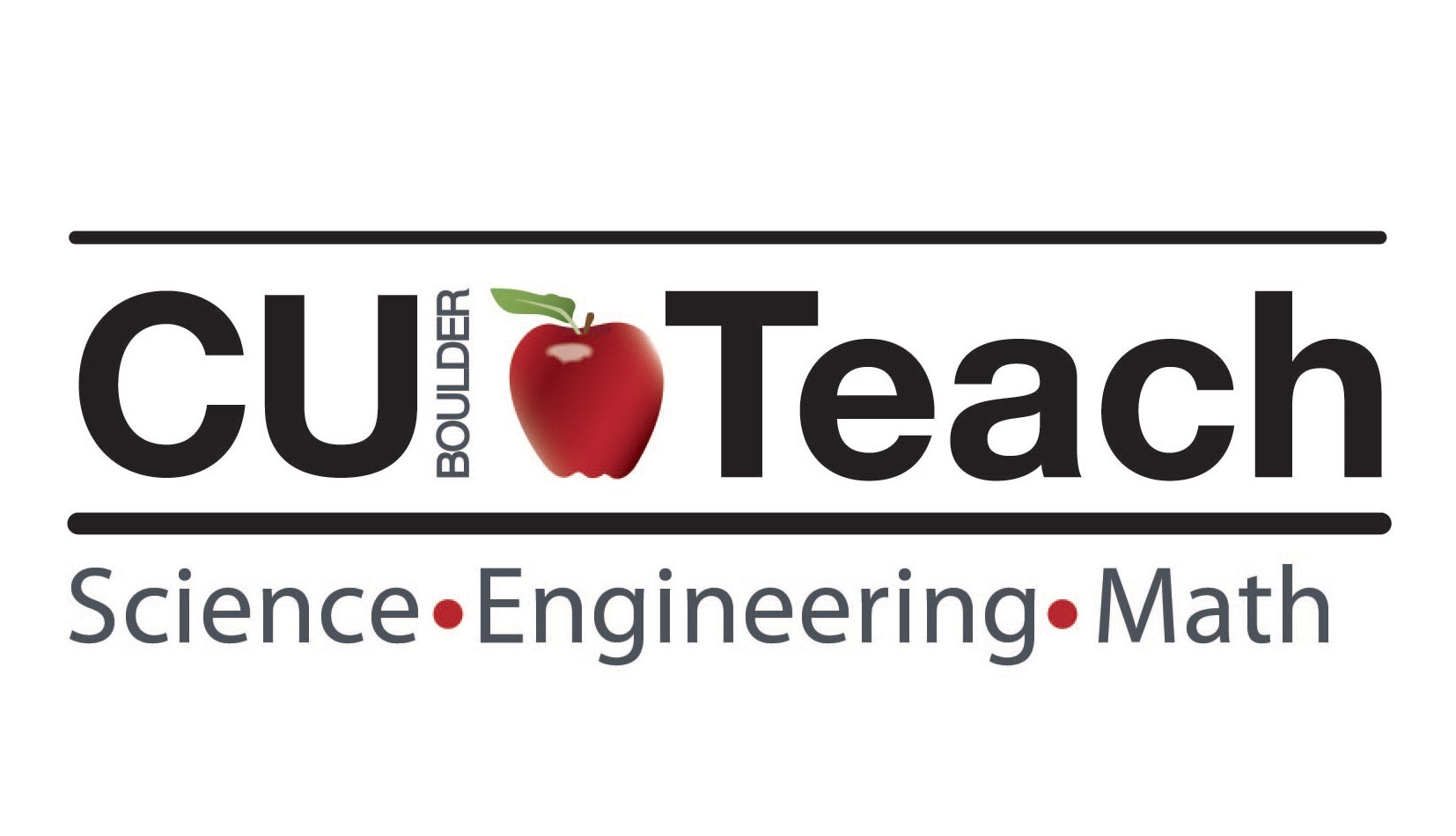CU Teach, housed in the School of Education, provides a pathway to secondary math or science teacher licensure for undergraduate, post-baccalaureate, or master's students. CU Teach believes in connecting theory to practice through authentic experiences, and the majority of CU Teach courses include a praciticum component in local schools or communities. We also strive to prepare students to teach using research-based instructional practices and to teach STEM for equity and justice.
The program is unique in providing an opportunity for undergraduate students to earn a bachelor's degree and Colorado teacher licensure in four years. Students who have already finished their bachelor's degree may earn a master's degree plus licensure in an accelerated, 14-month program, and there is also an option to solely earn a teaching license.
The starting point for CU Teach is Designing STEM Learning Environments and Experiences (EDUC 2035). This course is open to all undergraduates (though priority enrollment is given to freshmen and sophomore math, science, engineering, and open option majors). This course offers undergraduates an opportunity to try out teaching with real students in local middle schools. The course allows you to fulfill the youth experience requirement for officially applying to the CU Teach licensure program. The major goal is to offer students experiences that help them decide whether teaching science or mathematics is a career path they want to pursue.
Earning a teaching license through CU Teach is an excellent way to start your teaching career, no matter what state you choose to work in after you graduate. Once you earn a Colorado teaching license, you take it with you, whether you stay in Colorado or move to another state. If you do move to another state after you earn a Colorado teaching license, you will need to check with that state's department of education to find out what additional requirements, if any, you would have to complete to attain a license from that state. Generally, the licensing requirements are similar from state-to-state. However, there could be differences between Colorado's requirements and those for the specific state that you are planning to teach in after you graduate (e.g., taking an additional class or passing a state licensing exam). Set up an appointment with a School of Education advisor to learn more.
There are several classes you can take to help you with your goals of becoming a teacher. EDUC 3013: School and Society is required for every licensure candidate, and it meets the A&S Cultural and Gender Diversity OR Contemporary Societies core requirement. EDUC 2035: Designing STEM Learning Environments and Experiences offers hands-on teaching experience and the opportunity for students to explore teaching as a career. Check out teaching licensure programs that CU offers.
While CU Teach is specifically focused on increasing the numbers of secondary math or science teachers, any student at CU can take the program’s first course, EDUC 2035: Designing STEM Learning Environments. Any undergraduate student exploring whether teaching is right for them should consider taking EDUC 2035. This 3-credit course is a good starting point for anyone thinking about becoming a K-12 teacher (of any content area). However, given our program's focus on STEM teaching, priority registration is given to math, science, engineering, and open-option majors.
Certainly, as a sophomore you will have opportunities to complete your teacher licensure and bachelor's degree requirements prior to graduation. Set up an appointment with a School of Education advisor to learn more. An advisor can help you map out what it would take for you to earn a teaching license while you're at CU.
We strongly recommend that you put yourself on the waitlist for one of the current sections. It is the best way for us to know that you are interested in the program. We will give waitlisted students priority registration for the next semester’s course.
After Designing STEM Learning Environments, students are encouraged to apply to the School of Education’s Licensure program in either secondary mathematics or secondary science. Once admitted to the School of Education, students continue their major and core graduation requirements, as well as math/science specific education courses. If you start CU Teach early enough in your college career, you can graduate CU with a bachelor’s degree and a Colorado teaching licensure within four years.
For both math and science licensure programs, there are 30 credits, which involve six courses in Education, followed by student teaching for a full semester. You can take multiple licensure classes in the same semester, as long as you meet the prerequisites.
Yes. You can take the course to explore the idea of teaching and to learn more about math and science education without having to commit to the whole CU Teach program. In addition, the course will help you fufill requirements for our STEM Education Certificate.
Please visit the School of Education Advising page for more information.

